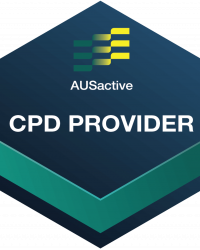Wunda Chair Repertoire
Strength:
Leg Work: Going Up Front
Alternate Names
Step Up, Forward Lunge
Derived From
Classical Reformer: Footwork
Primary Element
Strength
To strengthen hip extensor muscles (hamstrings) and knee extensor muscles (quadriceps) and to help align the ankle, knee and hip joints. The gluteals also play a role in stability and the exercise can be used as a gluteal strengthening exercise for deep stabilisers such as gluteus medius and gluteus minimus.
Secondary Element
Stability
The gluteals play a role in stability during the exercise to help keep the front leg still and supported on the chair. Primarily gluteus medius and gluteus minimus.
Tertiary Element
Mobility
To increase and build mobility in the knee, hip and ankle joints
Repetitions
4-6 each side
Apparatus Setup
Suggested springs
- Exo Chair by Balanced Body
- Cactus style number system
- Two springs on setting 3
- Cactus style number system
- Resistance: medium
Scan the apparatus once the client is moving for correct set up (Clain Pilates, 2002)
- Pedal position first – check the dowl is secure if split pedal
- Springs second
- Handles or small apparatus such a ball or Magic Circle last
Place foam matting or a pad over the base of the Wunda Chair underneath the pedal to stop the pedal ‘crashing’
Plane of Motion
Sagittal
Targeted Muscles
To create, develop and connect with the pelvis stabilisation muscles the focus is gluteus medius and gluteus maximus and the deep abdominal muscles transversus abdominis.
To work on strengthening the leg muscles the focus is on the below
The ‘knee extensors’ or quadriceps muscle group of the anterior thigh facilitate the pressing down of the pedal creating a concentric contraction. They comprise
- Rectus femoris
- Vastus intermedius
- Vastus medialis
- Vastus lateralis
The ‘hip extensors’ or hamstrings muscle group of the posterior thigh facilitate and control the return phase of the movement creating an eccentric contraction. They comprise
- Biceps femoris
- Semitendinosus
- Semimembranosus
Warnings
Not suitable for some knee and ankle pathologies, or if the client is unable to work in a pain free range of motion during the exercise. The exercise does require balance and strength. If the client needs assistance the Wunda Chair can be brought up against a wall, a pole or the end of the Cadillac to use the poles for support.
Execution
Facing the chair place the ball of one foot onto the pedal, pressing the pedal to the floor, before stepping the other foot up onto the chair. Keep the knees in line with the hip bones or ASIS and the knees over the ankles.
The arms can be reaching forward in line with the shoulders for more assistance or behind the head as a challenge. Transfer body weight forward and lean into the front leg before lifting the back leg up, bringing the pedal along, to a standing position on the chair. Press the pedal down with control to hover over the base of the chair, before repeating again with the lifting phase. Aim to maintain engagement of the gluteals and abdominals throughout to assistance with pelvis stability.
Observations
Do a body scan of the client taking note of the following points
Pelvis
- Are the hip bones even horizontally or is the client leaning to one side?
- Is the pelvis tucked posterior?
- Is the pelvis pushing back as the client rolls forward. The hips need to stay over the heels to let the abdominals do the work
Legs
- Is the bottom or back knee locked?
- Is the top or front knee rolling in? Encourage the knee to stay in line with the ASIS which will often involve reach the knee outwards slightly
Feet
- Are the insides of the feet lifting or leaning outward? (supinated)
- Are the insides of the feet rolling inward? (pronated)
Apparatus
- Is the pedal banging at the bottom? Increase the spring load so the client can control the springs and reduce the range of motion
- Place the Wunda Chair against a wall or pole (including the end of the Cadillac) for hand support and to assist with balance
Learning Style Technique Cues
Auditory – word associations that connect mind and body
- Keep the pelvis over the heels as you round forward and down, trying not to let the bottom sink back, instead lift up more through the centre or abdominals. Try not to lean back
- Say the client’s name when you’re about to interact with them
Visual
- Imagine yourself doing the exercise without the help of the springs, such as walking up a large staircase or stepping up into a high vehicle
- Imagine the crown of the head pulling you up towards the sky
- Lift the arch of the front foot and imagine a line up to the inner thighs or adductors. By lifting the arch engage the adductors to assist with stability
- You may demonstrate a part of the movement as a visual representation for the client to see
Kinaesthetic
- Feel the abdominals draw in when lifting the pedal up and standing up onto the chair
- Try to move on a vertical line or straight up, avoid leaning forward
- Feel the whole body working to control the movement, including using the arms as a balance and assist with the initial lift
- Press the pedal down only so far as the weight stays in the front leg and you don’t feel yourself rocking backwards
Modifications and Variations
Regress the exercise by
- Increasing the spring setting to two springs on setting 4 to assist with the lift off and support for the back leg, effectively reducing the leg load
- Reduce repetitions and/or pace
- Reducing the range of motion so the client can focus on pelvis and knee stability
- Place the Wunda Chair facing a wall, pole or the end of the Cadillac to assist with balance
Regression Repertoire to work on:
Progress the exercise by
- Reducing the spring settings to two springs on setting 1 or 2, or one spring on setting 3
- Removing the hands from a support position or position the hands behind the head
Progression Repertoire to work towards:
Series and Transitions
The exercise can form part of a series including the Single Leg Press Front and then Going Up Side, or alternatively transition by letting the pedal come to the base of the Wunda Chair, stepping the front or top foot back onto the pedal, bringing the hands forward and setting up for Pull Up Front.
When stepping off the pedal be sure to step one foot back to the floor or mat, then lift the pedal up to the stopper or top position before stepping the second foot back to the floor or mat. A heavier spring setting may ‘throw around’ a client during the dismount phase.

